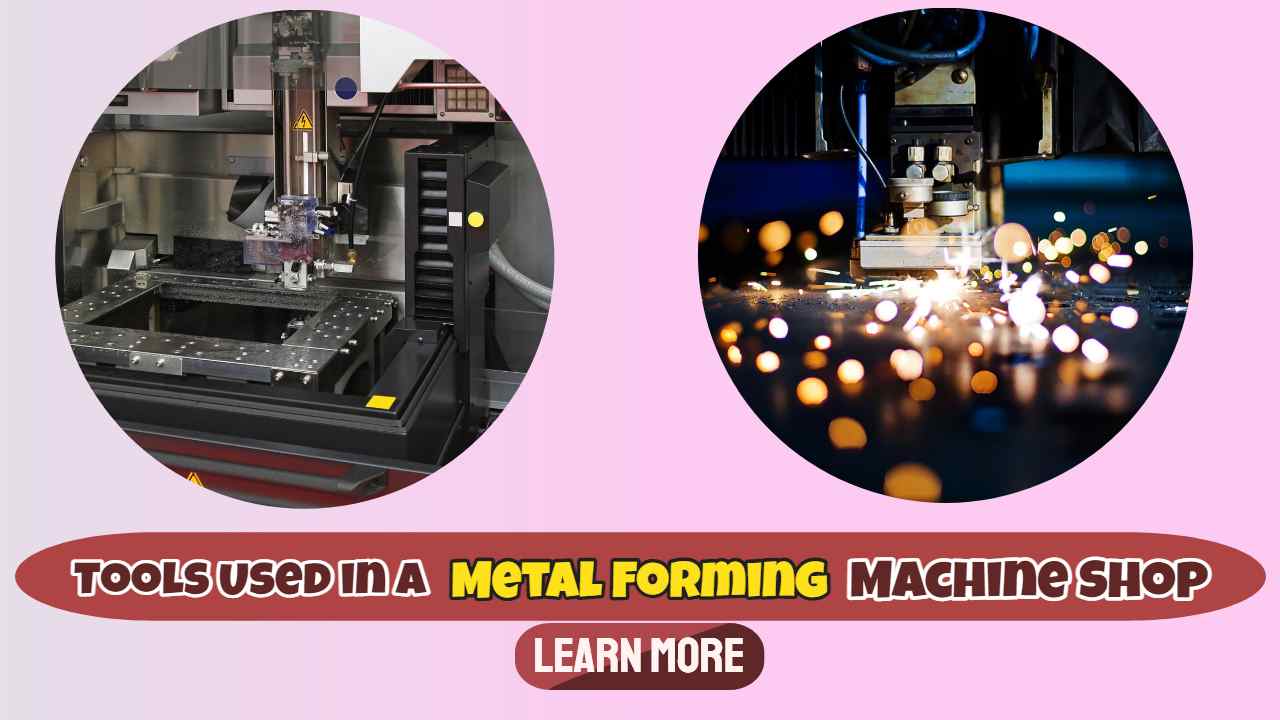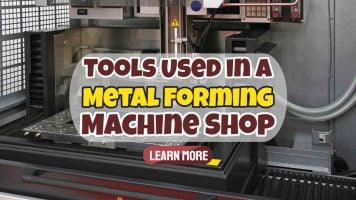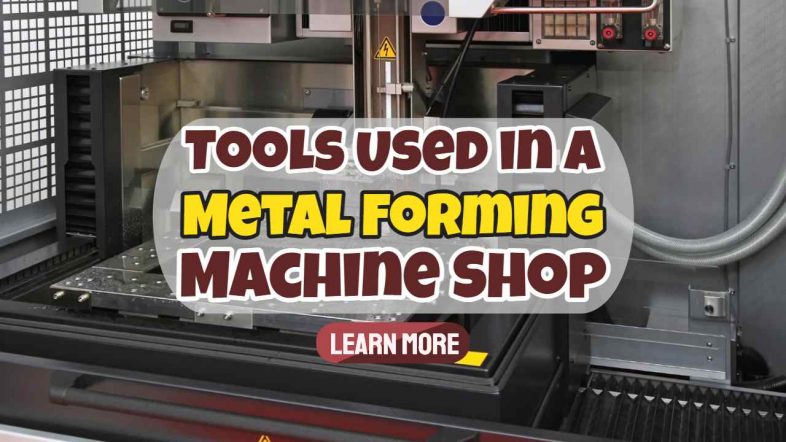There are some remarkable tools used in metal forming machine shops these days although not many people know it.
Readers don’t often read about fabrication machines unless it’s necessary. If you’ve navigated your way under the machinery for sale or fabrication machinery section, you might need something that will help you with the metals, and there are a lot of them out there. In fact, it might be overkill if every one of them is discussed here.
For everyone running a machine shop, your time is gold, which is why you may be interested in finding out the most commonly used types of metal forming machines today. These are the following:
- Shears
- Plasma Systems
- Laser Systems
- Waterjets
- Press Brakes.

Metal Forming Machine Shop
Shears
If you’re looking for the simplest and the most affordable option, you may want to go with shears. The name implies their function, which is to cut metal sheets like aluminum into specific sizes. They may also be used in other materials, including wood, plastic, and paper.
A shearing capability may range from the smallest gauge to an inch-thick workpiece with metal thickness. When you order aluminum, mild steel, or brass, you should expect them to get shipped in sheets. This is where a searing machine can come in handy, and they are even considered a backbone of metal forming.
There are many fabrication machines out there for specific industries. Check the UHI Group’s Website for more information about the other types and their uses before purchasing one. These one-stop shops have everything you need to be successful especially if you’re just starting in this industry.

Plasma Systems
While they may sound like a fiction writer’s work, using plasma is actually a widespread practice in producing metals. It works well with copper, brass, aluminum, and steel. However, it’s different from the other methods because it requires the material to be electrically conductive before it can effectively cut through.
This system consists of an accelerated jet of hot water and ionized gas to form an electric channel that cuts the workpiece. These are the fabrication machines that are relatively affordable and precise with their cuts. Small hobbyist shops or large industrial manufacturers may use these because the same cuts are often produced a hundred times with the same machine.
Laser Systems
These systems are usually advanced, and typical applications may include surface treatments, marking, welding, and cutting. Various industries have high demands for cutting precise and complex parts, and these may include aerospace, medical fields, shipbuilding, and electronics.
Lasers use thermal energy and melt a part of the material. The resulting surface is smooth and high-quality, which is often critical to operations like CNC or Computer Numerical Controls. The desired shapes in CNC are cut according to specifications, and there are very tight tolerances involved that are 0.001 inches. See more information about CNC on this page here.
Waterjets
One of the most useful out there is a waterjet. This is an industrial machine that uses an abrasive substance and water that can cut through anything. It’s used in rubber, brass, plastic, stainless steel, aluminum, titanium, ceramic, copper, ceramic, glass, quartz, granite, and many more.
Their versability and the absence of heat generation make them a valuable tool. Unless you need to cut through steel that’s at least two inches thick, there’s no need for the temperatures to rise. The waterjets often utilized the high-pressure pumps where their speed could reach over a hundred horsepower. Water is usually coming out of the nozzle, and this is going to cut the material.
Generally, manufacturers use garnet as a granular abrasive to aid in the cutting process. Whether you’re considering operating your own shop or are looking for the best machine to give you an edge, then this is one of the most versatile and cost-effective tools that you may want to consider.
Press Brakes
The press brake is an old and reliable machine that is used in many industries. This is one of the most dependable, sturdiest, and strongest tools out there. When you’re searching for these hardy tools, you may come across the vintage ones from the 60s or 70s that are still being used and in excellent condition. They are mainly used to bend metals, and they do this without a hitch.
Overall, the operation with the machine is pretty simple. You just need to secure the material on its bed, the ram is going to descend on it, and the weight or tonnage is going to bend the workpiece to the degree that you want. Different types of metals are used and fabricated by the press brakes, including sheets of steel, brass, and aluminum.
You’ll find four types of press brakes, including hydraulic, mechanical, servo-electric, and pneumatic. The performance rating of the press brakes is graded according to their bed length and pressing capacity or tonnage. This is going to dictate the length of the metal that will fit into its bending zones. The capability of a tonnage ranges from 25 tons to 1000 tons. The smallest lengths of the bed may start at 4 feet, and they can be up to 30 ft.
Classic machinery shops have used the hydraulic and mechanical types, which were reasonably common. The mechanical brakes dominated the industry in the 1950s, but this changed when technological advances and computers were first introduced. Nowadays, hydraulic press brakes are more user-friendly and famous for many people. Read more info about a hydraulic press in this URL: https://en.wikipedia.org/wiki/Hydraulic_press.
If you require lower tonnage, the mechanical press brake should be one of your priorities. They are simple to operate, easy to maintain, and are relatively affordable. This is something that will not break the bank but will help you in the long run, especially when it comes to bending thicker metals. The most efficient and powerful types are the hydraulic press brakes used in thicker sheets, and you will never go wrong with them.
The Metal Forming Machine Shop Applications to Know
After the metals are fabricated, they are often used in structural, industrial, and commercial manufacturing. They create parts for valves, fittings, cutlery, hand tools, airplane parts, pipes, cans, metal doors, nuts, and bolts. With the help of the right tools, you’ll be able to make significant progress and manufacture a lot in a short amount of time.








These machines require regular preventive maintenance to keep in optimal working condition and prevent any issues